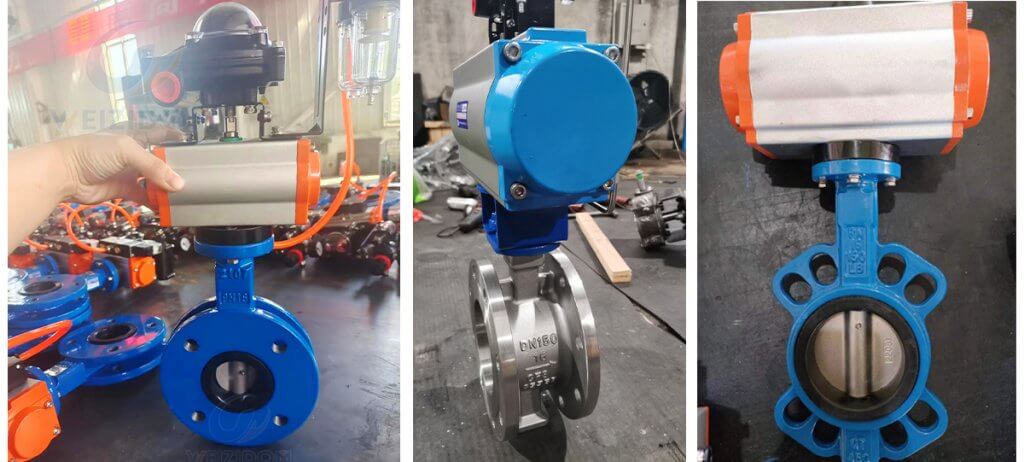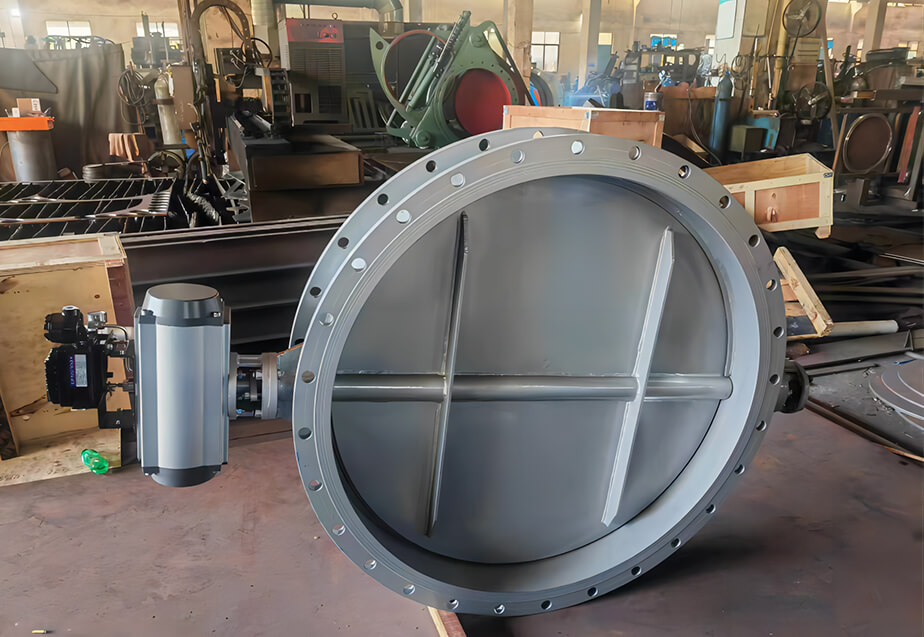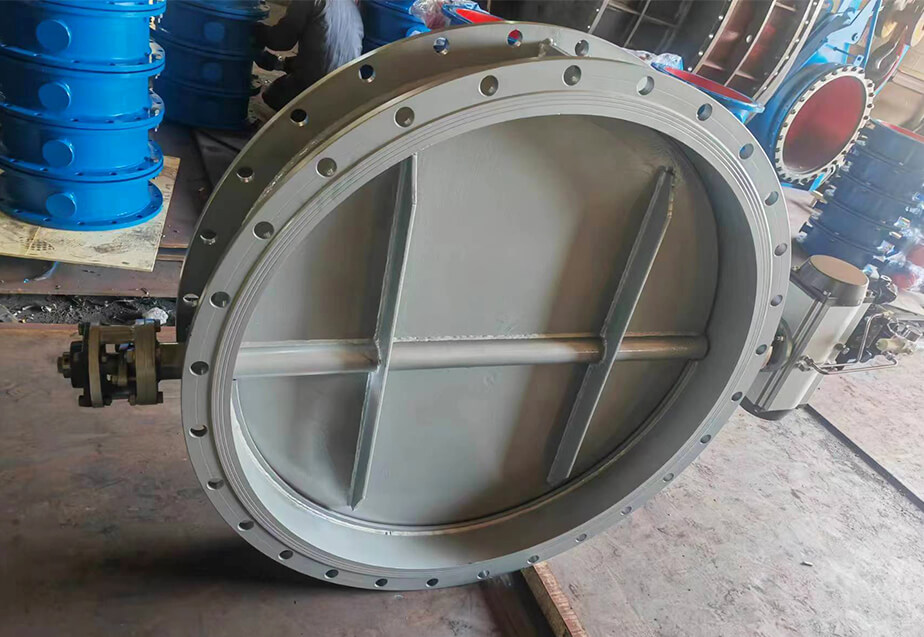Case
Home / Case / User Manual / How to maintain pneumatic butterfly valve?

Case

There are other factors that need to be taken into consideration for the powder system of the pneumatic butterfly valve, such as: the material cannot be allowed to rush directly to the valve plate of the valve when it is placed in the car from above (this impact force will also prevent the valve from closing tightly), and the material The static pressure also needs to not exceed the design pressure of the pneumatic butterfly valve, etc.
The difference between a control valve and an ordinary manual valve is that it cannot be treated as an isolated component, but must be considered as a part of the entire automatic control system. Many problems in the use of control valves are not model selection and The configuration problem is caused by the user's insufficient understanding of the control valve, which causes the control valve to fail to debug and cooperate well with the control system.
As long as you recognize the key to the problem, correctly select the valve type, and debug the control valve properly during the system debugging stage, you will be able to greatly reduce the failure rate and ensure long-term stable operation of the automatic control system.
1. Before installation, check that all parts of the pneumatic butterfly valve are not missing, that the model is correct, that there are no debris in the valve body, and that there are no obstructions in the solenoid valve and silencer.
2. Place both the valve and cylinder in the closed state.
3. Install the cylinder onto the valve (the installation direction can be parallel or perpendicular to the valve body), and then check whether the screw holes are aligned. There will not be much deviation. If there is a slight deviation, just rotate the cylinder body a little. , and then tighten the screws.

4. After the installation is completed, debug the pneumatic butterfly valve (the air supply pressure is 0.4~0.6MPa under normal circumstances). During debugging and operation, the solenoid valve must be opened and closed manually (manual operation can only be effective after the solenoid valve coil is de-energized). Observe the opening and closing of the pneumatic butterfly valve. If during the debugging operation it is found that the valve has some difficulty in the initial opening and closing process, but then normalizes, the cylinder stroke needs to be adjusted smaller (turn the stroke adjustment screws at both ends of the cylinder a little inward at the same time, and the valve needs to be moved to the open position during adjustment) , then turn off the air source and adjust again) until the valve opens and closes smoothly and closes without leakage. It should also be noted that the adjustable muffler can adjust the opening and closing speed of the valve, but it cannot be adjusted too small, otherwise the valve may not operate.
5. Should be kept dry before installation and cannot be stored in the open air.
6. Before installing the butterfly valve, check the pipeline to ensure that there are no foreign objects such as welding slag in the pipeline.
7. The manual opening and closing resistance of the butterfly valve body is moderate, and the butterfly valve torque matches the selected actuator torque.
8. The specifications of the flange used for connecting the butterfly valve are correct, and the pipe clamp flange conforms to the standard of the butterfly valve flange. It is recommended to use special flanges for butterfly valves, and flat welding flanges are not allowed.
9. Confirm that the flange is welded correctly. Do not weld the flange after the butterfly valve is installed to avoid burning the rubber parts.
10. The installed pipe flange must be centered and aligned with the inserted butterfly valve.
11. Install all flange bolts and tighten them by hand. Make sure that the butterfly valve and flange are aligned, and then carefully open and close the butterfly valve to ensure flexible opening and closing.
12. Fully open the valve and use a wrench to tighten the bolts in diagonal order without washers. Do not overtighten the bolts to prevent serious deformation of the valve ring and excessive opening and closing torque.
1. During use, the pneumatic butterfly valve should always be kept clean, and the transmission thread must be lubricated regularly. When a fault is found, it should be stopped immediately, and the cause should be found out to eliminate the fault.
2. The bolts of the packing gland should be tightened evenly and should not be pressed into a crooked state to avoid damage, hinder the movement of the valve stem or cause leakage.


3. During installation, the valve can be directly installed on the pipeline according to the connection method. Under normal circumstances, it can be installed at any position in the pipeline, but it needs to be easy to operate and maintain. Note that the flow direction of the medium in the stop valve should be upward from the bottom of the longitudinal valve disc. The lift check valve can only be installed horizontally.
4. When the pneumatic butterfly valve is used, it can only be fully opened or fully closed. It is not allowed to be used to adjust the flow rate to avoid erosion of the sealing surface and accelerated wear. There is an inverted sealing device in the gate valve and the upper thread stop valve. Turn the handwheel to the uppermost position and tighten it to prevent the medium from leaking from the packing.
5. Use the hand wheel when opening and closing the pneumatic butterfly valve. Do not use levers or other tools to avoid damaging the valve parts. Turn the handwheel clockwise to turn off, and vice versa to turn on.
6. Before installation, it is necessary to carefully check whether the pressure and diameter marked on this valve meet the usage requirements, eliminate defects caused by the transportation process, and eliminate dirt on the valve parts.
7. Valves stored for a long time should be inspected regularly. The exposed processing surface must be kept clean and dirt removed. During storage, ball valves should be blocked at both ends and in an open state. For pneumatic butterfly valves, both ends of the channel should be blocked and in a closed state. Store neatly in a ventilated and dry place indoors. Stacking or open storage is strictly prohibited.
The valve positioner is the main accessory of the pneumatic butterfly valve and is used in conjunction with the pneumatic butterfly valve. The valve positioner is a regulator that functions as a proportional amplifier. The valve positioner and regulating valve form a valve stroke adjustment system. The main components of this system are a gas volume element and a hysteresis element. Valve positioners can be divided into pneumatic valve positioners, electrical valve positioners and intelligent valve positioners according to their structural forms and working principles. Its function:
1. Eliminate lag;
2. Eliminate incongruity;
3. Used in composite adjustment systems;
4. Realize reverse action;
5. Operate non-standard actuators;
1. The accessories of pneumatic butterfly valve mainly include: positioner, converter, relay, booster valve, retaining valve, pressure reducing valve, filter, lubricator, travel switch, position transmitter, solenoid valve, hand wheel mechanism.
2. Accessories serve to supplement functions and ensure valve operation. Increase what is necessary and do not increase what is unnecessary. Adding accessories when unnecessary increases price and reduces reliability.
3. The main function of the positioner is to increase the output force and movement speed. When these functions are not needed, you can do without it, not just bring the positioner.
4. For fast response systems, do not use valves that act quickly, and a converter is optional.
5. In strict explosion-proof situations, optional: electrical converter + pneumatic positioner.
6. The solenoid valve should choose a reliable product to prevent it from not acting when it is required to act.
7. It is recommended not to use the handwheel mechanism in important occasions to prevent human malfunction.
8. It is best to be provided by the manufacturer and assembled on the valve to ensure the reliability of the connection between the system and the assembly.
9. When ordering, the name, model, specification, input signal, output signal, etc. of the accessory should be provided.
10. Again: Please note the importance of these "little things", especially reliability.